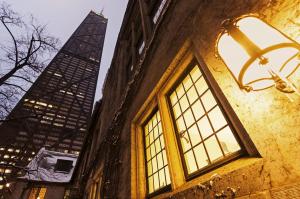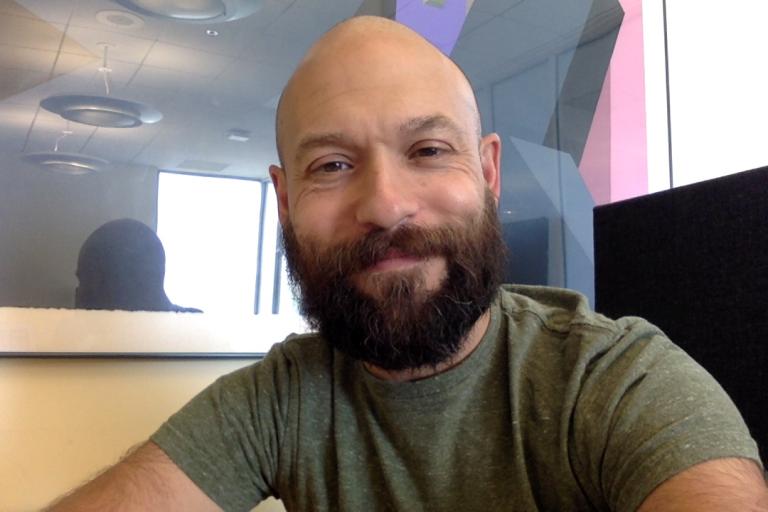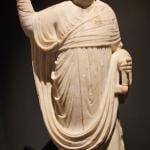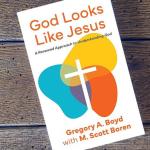Cardinal Francis George, the former arch-bishop of Chicago, said the following just few years before his earthly demise,
I expect to die in bed, my successor will die in prison and his successor will die a martyr in the public square. His successor will pick up the shards of a ruined society and slowly help rebuild civilization, as the church has done so often in human history.
That is quite a claim. One that seems to predict mass incarceration of clergy and even execution of religious adherents. Was George, known to be a brilliant scholar and theologian, exaggerating for the sake of the seminarians he was addressing? Was he using hyperbole to stress the importance of their vocational call? Or was he serious about his claim? In this series I will give reasons why George’s prediction is probably true and the collapse of orthodox Christian faith in America inevitable.
Why Collapse?
But why think this is the case? Why believe that orthodox Christian belief and practice will inevitably disappear from the American landscape? After all, didn’t we just experience a kind of Christian “insurrection” earlier this year? Maybe this panic among the faithful isn’t warranted in light of the actual conditions? Perhaps, like each passing generation of American Christians, I am overreacting to troubling but otherwise negligible sociological and political trends?
Unfortunately, I suspect that these trends are not negligible, and that we really are in serious trouble and our panic warranted (not that we should panic, just that our sense of unease has a real object causing it). There are some relatively clear signs of the times which indicate the demise of any publicly-practiced orthodox Christianity in America. Also, it is not just a fading into irrelevance I am talking about, although that too will happen. Instead, I believe that orthodox Christians will actually be persecuted concretely. This might entail the banning of public worship or the incarceration of priests and pastors who defy state-authorized religious and moral teachings. We have already seen such moves in countries like Canada.
The three signs that point to this collapse can be construed as lost (or nearly lost) campaigns on the battleground of American culture. These are cultural arenas where, should orthodoxy not find itself fighting boldly on each, the orthodox themselves will become, or have already become, a conquered people. These three battles are waged in the realm of the senses, the realm of the mind, and in the realm of the heart or emotions. All battlegrounds where orthodox Christianity is struggling to maintain relevance, let alone win the day. In part one of this series, I look at the lost battle of the senses. However, first I should give some definition of what I mean by “orthodox” Christianity, as this series is not about Eastern Orthodoxy, but about ecumenical, consensual and traditional Christian faith.
What I Mean By Orthodox Christianity?
Orthodoxy can be a tricky term. It can be used as if everyone who hears it should know exactly what it means, to include which fundamental dogmas it includes and which doctrines it anathematizes. But, so often this is not the case, and orthodoxy is something that various churches, denominations, and movements wrestle over, each generation of the church vying to claim it as their own.
For my purposes, however, I will posit the following necessary and sufficient conditions for a church community to be considered truly orthodox:
- A church is orthodox if its members can recite the propositional claims of the historical, ecumenical creeds with an authentic belief in the metaphysical and historical realities that ground the truth of each claim.
- A church is orthodox if it maintains a hermeneutical approach to the scriptures that is consistent with, albeit not identical to, interpretive approaches of the early, medieval and reformational eras; this would include an approach that presupposes the divine inspiration of at least the 66 canonical books of the Protestant Bible and the continuity, cohesiveness, and universality of its message, the Gospel.
- A church subsequently is orthodox if it professes salvific exclusivity; meaning that it is always and only through Jesus Christ that any individual person, regardless of time, place, culture or level of development, is saved to eternal life with God.
One caveat to this point: The moment of Christo-centric salvation can occur in a variety of ways, however. For example an 18th-century Mongol women living in Central Asia could be saved having never heard the name of Jesus Christ or the Gospel message. But, her salvation would occur through the General Revelation given to her by Christ and her response to that General Revelation or through some special revelation given to her by God. Either way, she would not be saved through her Muslim or pagan faith and practice, rather in spite of it. - A church is orthodox if it maintains the traditional teachings of the church on non-negotiable moral issues, e.g. human sexuality, the sanctity of all human life, the nature of marriage, the apodictic commands of God found in the Old and New Testament.
- Finally, an orthodox church retains an identifiable continuity of basic religious practice with the historical, ecumenical Church of Reformation Protestantism, Roman Catholicism, and Eastern Christianity, e.g.,: congregating together on Sundays, having a recognizable ecclesial structure, the practicing of biblical sacraments, corporate prayer and worship, preaching, charitable outreach, etc.
While these criteria are not exhaustive, it seems that church communities that meet all of these conditions, regardless of denominational affiliation or ecumenical tradition, could rightly be called orthodox. For a more detailed, astute, and comprehensive account of ecumenical, orthodox Christianity, one should read Thomas Oden’s masterful Classical Christianity: A Systematic Theology. The introduction alone is worth buying the volume.
First Sign of Orthodox Collapse: Losing the Battle of the Senses
Obscuring Visibility
In another excellent book, The Lost History of Christianity, historian Philip Jenkins explains one way in which a religious identity is eliminated from culture, through the dismantling of the religious imagery and the sound world that expresses a religion’s theological claims and social practices. For example, Jenkins summarizes what happened to Christian art, architecture, and imagery when Christian cultures came under a dominant Islamic political rule:
Under Muslim rule, churches were tightly constrained in their ability to project their physical presence into the landscape, by the public display of icons and images or statuary, by bell ringing or public processions. It was no longer possible to use the liturgy and the spectacular external decorations of church buildings to offer believers a taste of the ultimate.
Jenkins, 215
In other words, Islam, not unlike the aggressive secularism today, developed a program of expunging visible Christianity from the landscape of the nation or region it conquered. Church cupolas were replaced with domed Mosques, iconic imagery demolished and replaced by Arabic script, and spaces of Christian worship and practice pushed to the margins of the city and outlying country side.
A contemporary analogy of this might be taking a stroll down Chicago’s “the Magnificent Mile” of Michigan Avenue, where sacred buildings like the beautiful Fourth Presbyterian Church are dominated by skyscrapers dedicated to commerce, fashion, and trend. Is it any wonder that Fourth Presbyterian’s theology is also subservient to the secular forces that erected the buildings which loom over its steeple?

Muting the Sounds of Faith
But it was not only the visible imagery of Christianity that was suppressed, it was also the soundscape of Christian faith that was precluded from the everyday experience of the average citizen:
Far from dominating and sanctifying the public landscape…Christian structures and rituals were forced into varying degrees of concealment, which grew all the more discreet following waves of riot or violence. Over the centuries, for instance, Nestorians abandoned what had once been their common use of icons, and had few opportunities to use the wooden clappers they employed in place of [church] bells.
Jenkins, 215
Wooden clappers in the place of church bells? Christians today don’t even have that. And when was the last time one heard an actual church bell ring anyway? In the late Middle Ages it was not long before former Christian cityscapes were dominated by the minaret and the muezzin, sights and sounds that declared the glory of Allah and the subservient, even if honored, role of his merely human prophet Issa. Moreover, the two religious expressions were simply not compatible in the same city, since they were fundamentally at odds theologically, “Cities could have a soundscape based on the Muslim muezzin or Christian bells, but not both. Several times a day, the call to prayer sent a straightforward message about who held political power” (Jenkins, 216).
In spite of the lack of church bells, the realm of music may indeed be one of the last bastions for orthodox Christianity. At least during the Christmas season, when our sensitivity to the divine increases, even if only faintly, Christian music retains some place in the culture. A few might consider the rise of Christian pop music, or Christian rap, a further indication that God is not dead in American culture. However, whether Christian popular music can maintain pace with its worldly rivals has yet to be seen and, in many ways, it has already been judged and found wanting. This may portend a serious lack of staying power. Christian Pop’s traditional predecessors, the Hymns and Gospel, alternatively, are quickly vanishing from our sound world. Even “Amazing Grace” only makes a rare appearance in today’s auditory soundscape.
Orthodoxy and The Soft Tyranny of a Liberal Society
While today’s subjugation of Christian sights and sounds doesn’t takes place through force as it often did in the Middle Ages, it does take place through various laws and other non-violent elements of culture. It is noteworthy, however, that not all subjugation of visible Christianity in Dar-al-Islam was through force either. Much of Christianity’s subjugation was through gradual cultural means or de jure pronouncements. These cultural expressions of Islam and legal dictates provided the initial impression of Islamic cultural domination only then to become over time de facto realities.
This is why it is terribly unfortunate that so many Christians today have abandoned interest in politics and law. Thinking that laws, and the Supreme Court Justices that interpret them, don’t matter in the shaping of the hearts, minds and practices of people living under them is both naive and dangerous. This is especially poignant today after nearly 18 months of “guidelines” restricting the gathering of church communities. For, in the end, it is the gathering church that is the ultimate “visible sign” of Christ. A church that does not gather cannot act as the embodiment of that greater Truth which it has been called to represent.
Either way, whether through brute physical force or the more indirect mechanisms of cultural pressure and de jure laws, the careful deconstruction of anything that might remind a population of its Christian roots was one tactic in the overall siege against the will of those Christian communities still professing orthodox faith. By “Progressively reducing the conspicuous display of signs of faith,” Islamic rulers “reduced the number of reasons for minority believers to maintain their stubborn dissidence, and encourage conformity” (Jenkins, 215).
Orthodox Christianity vs. Secularism’s Dominant Brand
While traditional Islam today is doubling down in places that had, for a short time, drifted secular, Secularism is doubling down in its domination over the sensory experiences of most Americans. Apart from gaudy, zirconium-studded jewelry, many Americans today have never experienced any real overt, genuine and powerful images of Christian piety. Most young people have not participated in an annual Corpus Christi procession, heard church bells ringing on a weekly basis or viewed statuary or painting (of a high quality) representing the transcendent hopes or historical legacy of Classic Christianity. Our visual and auditory world is shallow and thin.
Dissident attempts to recapture the religious imagination in the domain of film are few, far between, and often of incredibly poor quality. The last, best hope probably being the cinematization of Tolkien’s Lord of the Rings trilogy, itself ambiguous enough to appeal to all audiences. Others will point to Gibson’s Passion of the Christ (a film that was met with considerable cultural blow back), or the mercurial works of Terrence Malick. While Jesus films come and go, their existential power and social influence is weak compared to the secular imaginary that dominates our thought world daily. Jesus, Mary and Joseph simply cannot compete with Han, Luke, and Leah.
The average US citizen today will have an array of sensory experiences of secular culture that vastly outstrips any encounter with Christian imagery, art, or sound. The shrines of secularism are legion: Sports stadiums, movie theaters, grocery stores, gyms, restaurants and bars, Walmart and Home Depot. This doesn’t include the political and social propaganda that pours through our screens and into our living rooms. Nor does it account for the alternative mythologies streamed unceasingly to us in the form of Marvel, Star Wars, and Harry Potter (I am no expert in current pop culture, and at 45 I am sure the examples given here are already dated. But, whatever the 2021 versions of each may be, it is those that dominate our visual world and shape our inner one).
Further, this phenomena will be most concentrated in our cities, where not only are the senses dominated by secular messages, symbols, and stories, but where nature is absent and everything seen or heard can be readily explained as “the work of human hand” rather than that of an almighty, immaterial Creator. It is the daily interactions with this Christian-less yet utterly concrete culture that wears down the otherwise stalwart defender of Christian orthodoxy.
Conclusion: Orthodox Christianity has Lost The Battle of the Senses
With the arrival of COVID-19, this slow yet steady process of losing the battle of the senses has accelerated. Church leaders who relinquish the right to congregate at Sunday service or the Mass in order to appease the sensibilities or appetites of those in political power are partially responsible for that increase. And so the march toward a culture void of any Christian presence seems inevitable. Certainly Christians may continue to move freely about their world so long as their faith is not recognizably displayed, just as Christians were able to blend into Islamic societies by taking on Arabic names and dressing in Islamic fashion. Perhaps the central Christian image of the cross will also remain widespread in the culture, albeit worn in predominantly bauble-like fashion or as a gaudy adornment on an otherwise secularized body.
Still, losing the battle of the senses is not a sufficient condition for the collapse of Christian orthodoxy in America. For even if our cityscapes flourished with basilicas, and Sunday mornings resounded with church bells reminding the faithful of their holy obligations, at most we could say we would be like Europe. Even there, however, is it any wonder that laws are now emerging to limit the extent of Muslim religious expressions in European cities? Our embodied nature feeds off of what we experience sensorally around us, and some of that, much of it perhaps, transmits to the soul.
As to the “soul,” in much modern philosophy and theology it is often equated with “mind.” In the next post I will look at the battlefield of the mind and how Christianity has lost this battle within the domain of the academy.














